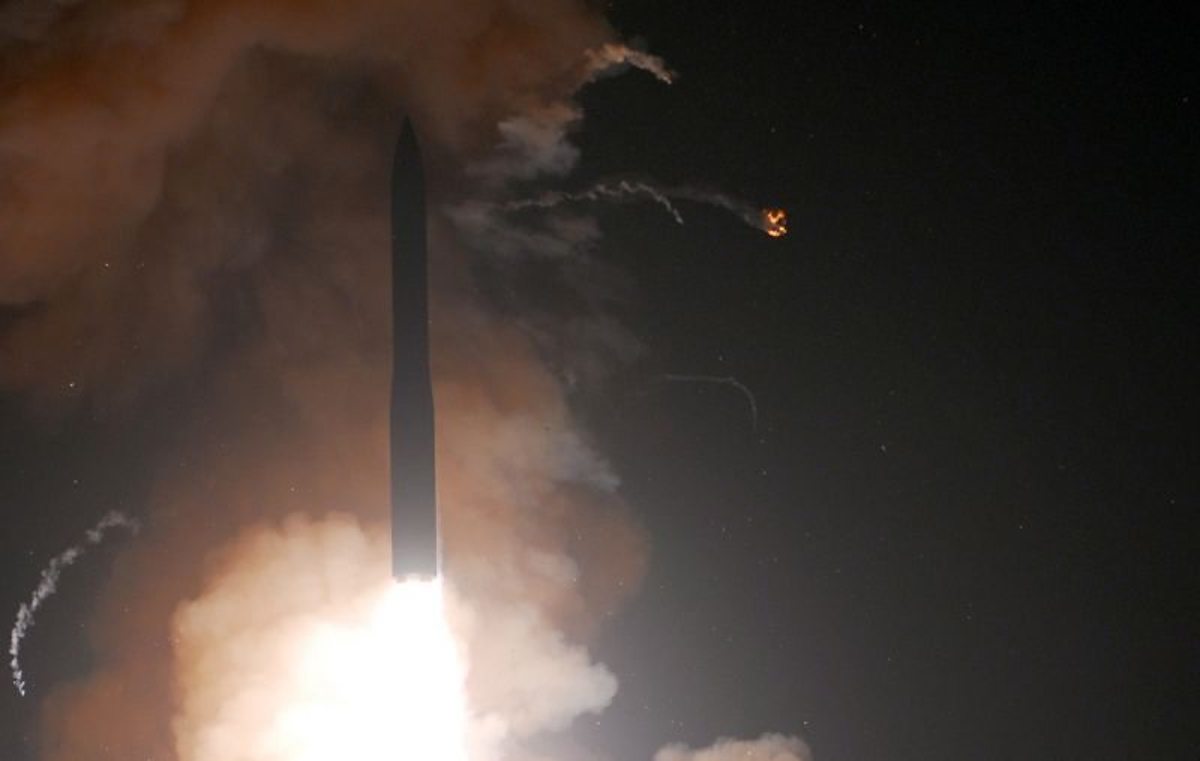A Nuclear Ban by All but Those Who Possess the Bomb
The Other January Anniversary Few of Us Think About

A year out from the January 6, 2021, riot at the U.S. Capitol, Congress, the media, and much of our citizenry are obsessing over a potential demise of democracy. While this may be a substantial concern, it could be rendered moot by an existential threat constantly facing American society: nuclear war.
This January 22 we will also be a year out from the 2021 implementation of the United Nations Treaty on the Prohibition of Nuclear Weapons or TPNW. The treaty bans the development, testing, possession, and use of all nuclear weapons. This is momentous news. You wouldn’t know it, however, by what occupies the minds of Americans these days, most of whom are unaware or undisturbed that our nation is breaking international law.
Eighty-six countries have signed onto the TPNW, but the list excludes the countries that actually possess nuclear weapons: the U.S., Russia, China, France, United Kingdom, Pakistan, India, Israel, and North Korea, and five other countries that host nuclear weapons on our nation’s behalf (Turkey, Italy, Belgium, Germany, and The Netherlands).
Should we be surprised that no nuclear nation complies with the TPNW — especially our own? Not if we look at our nation’s track record on nuclear disarmament.
In 1968 the U.S. signed the Treaty on Non-Proliferation of Nuclear Weapons by which it joined the four other nuclear powers at the time (Russia, China, France, and the United Kingdom) in promising to get rid of all their nuclear weapons, while 190 other nations promised to not obtain them.
More than 50 years later the world remains awash with nuclear weaponry, despite many subsequent nuclear treaties. These include the Limited Test Ban Treaty (1963), Outer Space Treaty (1967), Anti-Ballistic Missile Treaty (1972), Strategic Arms Limitation Treaty I (1972), Threshold Test Ban Treaty (1974), Peaceful Nuclear Explosions Treaty (1976), Strategic Arms Limitation Treaty II (1979), Intermediate-Range Nuclear Forces Treaty (1987), Strategic Arms Reduction Treaty I (1991), Strategic Arms Reduction Treaty II (1993), Comprehensive Test Ban Treaty (1996), Strategic Offensive Reductions Treaty (2002), and New Strategic Arms Reduction Treaty (2010).
The Federation of American Scientists estimates that nuclear warheads currently number 13,150 globally. These are thermal nuclear weapons, each thousands of times more powerful than the fission weapons the U.S. dropped on Hiroshima and Nagasaki.
The International Campaign to Abolish Nuclear Weapons (ICAN), winner of the 2017 Nobel Peace Prize, warns that even limited nuclear conflicts will cause global devastation. According to ICAN, the detonation of just one percent of the global nuclear arsenal will threaten as many as 2 billion people with famine. A full-out nuclear war between the U.S. and Russia would quickly result in hundreds of millions of deaths and bring about a nuclear winter that will destroy the ecosystems that support life on our planet.
A study in the Bulletin of the Atomic Scientists estimates the U.S. nuclear arsenal has 3,800 warheads, 1,800 of which are deployed. The U.S. employs a triad of nuclear delivery systems for these warheads: missiles launched from submarines, land-based intercontinental ballistic missiles (ICBMs), and bombs dropped from jets.
America’s nuclear force is unstoppable. Yet, the U.S. is modernizing its arsenal and delivery systems at a cost of $1.2 trillion. Moreover, according to the latest (2018) U.S. “Nuclear Posture Review” (at page 22) issued by the U.S Department of Defense, our nation has never adopted a “no first use” policy for nuclear weapons, nor does it believe one is justified. These realities belie any authentic intent of our nation to rid the world of these monstrous armaments.
On December 16, 2021, hundreds of leading scientists and engineers cosigned a letter urging President Biden to declare that our nation “will not use nuclear weapons first under any circumstances.” This would be a long overdue step, but one still falling far short of ending the existential threat of nuclear weaponry. As the nation that first brought nuclear weapons into the world and the only one to have ever used them, we must go further down the path pointed out by the December 16 letter.
Decades of bilateral and multilateral nuclear agreements have failed to end the greatest threat hanging over humanity. The way out of this global nuclear quagmire is for the U.S. to take the lead and unilaterally disarm itself of nuclear weapons, in the same vein that it brought them into existence.
The December 16 letter concludes with a plea for the immediate elimination of silo-based ICBMs. As explained in the letter, these missiles are kept on alert because they are vulnerable to Russian nuclear attack. This situation forces a U.S. president to make a decision to retaliate in only a few minutes.
All ICBM missileers are trained at Vandenberg Space Force Base (VSFB). Testing of the ICBM system is also conducted at VSFB. A peaceful protest by the main gate of VSFB condemning nuclear weapons is scheduled for January 22, 2022, from 12:30 to 2 p.m. The base directs participants to park at the nearby Vandenberg Middle School. Masks are encouraged.



